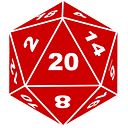
Thanksgiving is just around the corner, and you may be looking to run a holiday themed one shot, or have your D&D party fight some angry fantasy turkeys. You’ll have to go somewhere else for the oneshot (though I do have a suggestion at the end of the article), but this post will give you all the tools you need for your party to fight wacky, fantasy turkeys in combat this Thanksgiving.
Today, we will be analyzing combat tactics for the three best 5e turkey hombrews I found in a quick internet search. These are the dire turkey by u/kcon1528, the Cthurkey by Skaldforge, and the Poultrygeist by u/BJHypes. (Note to those of you who are new to medium: anything that’s underlined is a link)

The dire turkey is the least ridiculous turkey I will analyse in this article. A huge, unintelligent beast, this turkey variant fights because it needs to eat. It may seem outlandish for a turkey, even a giant fantasy one, to go chasing humans; however, turkeys are opportunists, and “will eat darn near anything they can fit down their throats.” (cite: Game and Fish Magazine) Normal sized turkeys eat insects, frogs, and salamanders, so the elephant sized dire turkey would probably eat horses and humans if it got the chance.
Unlike the ordinary turkey, which hunts in the day, dire turkeys can see well in the dark and might be nocturnal. They can fly faster than they walk, but like normal turkeys, they can probably only fly for short distances. Dire Turkeys will remain on the ground unless they need to flee or prey is able to outrun them. However, with the aggressive feature, its unlikely that PCs will be able to escape.
When hunting, a dire turkey is indiscriminate and direct. It leads with a haunting warble, which will make its prey less threatening. Then, it chooses a target at random, (It isn’t smart enough to take armor or Strength into account) and attacks them with its beak and talons. If its beak attack is successful, it swallows them the following round and repeats the process with a different target. Once it swallows two targets, the dire turkey is satisfied and goes back to its lair.
Things happen slightly differently when the dire turkey’s prey puts up a fight. An opportunistic hunter, the dire turkey will switch targets in hope of an easier meal if it misses with its beak attack two rounds in a row. It will also switch targets if its prey is able to deal 30 or more damage in one round. If two enemies are attacking it at once, it uses its beak against its prey and its talons against the other enemy. Dire turkeys flee when reduced to 91 hp (60% of their hit point maximum), possibly provoking opportunity attacks as they fly away.

If you like some Far Realms creepiness with your thanksgiving, the Cthurkey is for you. The Cthurkey is a mixture of octopus, crab, and roasted turkey which prefers to lay ambushes in dark, solitary caves according to its flavor text. Its high intelligence and wisdom indicate that it can strategize, adapt to the situation, and tell when it needs to retreat.
It’s high Dexterity and relatively low Strength indicate that it prefers to stay in melee combat for as short as possible, and isn’t equipped to fight multiple opponents at once. This supports the flavor text’s assertion that it’s an ambush predator; however, it doesn’t have proficiency in stealth. This means that the Cthurkey relies heavily on dark surroundings and its blind-sight to keep it hidden, and will never hunt above ground. Enemies with light sources or darkvision counteract its advantage, so it’ll want to take them out first.
The Cthurkey’s primary attack is it’s tentacles, which can grapple and restrain a single target. If that attack hits, it can bite the target. It can only grapple one target at a time, but can move grappled targets (even medium creatures) at a pace of 15 feet per round.
Based on everything we just analyzed, the Cthurkey will use the following tactics in combat. It will wait in a well traveled but poorly lit section of cave or underground river (the Cthurkey is amphibious) until adventures, or other potential prey, come near. Then, it will pick one target to be its prey. If one, and only one, member of the party has darkvision or a light source, they will be the Cthurkey’s target. If multiple party members have darkvision or light sources, the Cthurkey may decide it’s too risky and choose not to attack. If its super hungry, it will attack the group member with the lowest Strength score to minimize the chances of them breaking the grapple, or the one furthest away from the group to minimize the chance that someone else will come to their aid.
Once it’s chosen a target, the Cthurkey will grapple them and drag them away to its lair, making bites and tentacle attacks as it does so. If it attacked from the water, it will drag them underneath to suffocate them as it feasts. The Cthurkey will run when engaged by 3 or more enemies, when reduced to 61hp, or if it didn’t initiate the attack. When fleeing, the Cthurkey disengages to avoid opportunity attacks.

The poultrygeist is probably the most unique homebrew I’m analyzing in this article. According to its flavor text, it disguises itself as a roast turkey for thanksgiving dinners before coming out in the open to attack. Its high Strength and Constitution show that it’s not afraid of engaging in melee combat, and its high Intelligence and Wisdom show that it can tell when its outmatched and come up with decent strategies. Its ability to fly incentives it to swoop in and out of enemies’ reach, provoking opportunity attacks but avoiding multiattacks. With blindsight and darkvision, the poultrygeist has an advantage in the dark. It will knock out light features using its interact with object in order to maximize this advantage.
A poultrygeist’s main attack compromises of one bite and two claws. The poultrygeist is smart enough to carefully pick targets for this attack, but its flavor text gives us no advice for what it’s priorities are in battle. A poultrygeist looking to win a fight will go for the toughest looking opponent first, one looking to cause damage will go for the weakest first, and one looking for a challenge will go for the strongest.
The poultrygiest has two other attacks that we need to account for. The first is a breath weapon: spewing flaming stuffing. It will use this weapon whenever it’s available, moving around the battlefield to catch as many targets as it can. In addition, it can give up one of its attacks to animate a different part of the thanksgiving feast as an ally. From a strategic point of view, this might not be optimal to use all the time, but forget the math: hostile mashed potatoes are a super memorable enemy and this action isn’t that much worse than a single claw attack. In the name of fun and flavor, have the poultrygeist forgo a claw attack each round it isn’t spewing stuffing to animate a different dish to serve as it’s ally.
As constructs, poultrygeists may not have self-preservation instincts, so they might just fight to the death. If your poultrygeist wants to live, have it flee when reduced to 44hp, disengaging and flying away.
As a thanks for sticking around till the end of the article, I’d like to point you to some other resources that might be useful for Thanksgiving themed adventures. Note that I haven’t tested any of these at the table, but they look pretty cool.
DM Dave’s Gobble-lin: https://dmdave.com/gobble-lins/
Tribality’s Thanksgiving article (Includes 3 player races, 3 subclasses, and 3 reskinned monsters): https://www.tribality.com/2016/11/23/gobble-ins-centaurkeysand-thanksgiving-one-shots/
Free thanksgiving 1 shot by Elven Tower on DM’s Guild: https://www.dmsguild.com/product/227114/The-Turkey-Snatcher?term=turkey
I got my info about real turkeys from the following articles
Want to be notified when I come out with new posts? Subscribe to my email list for a notification every time I come out with a new post







